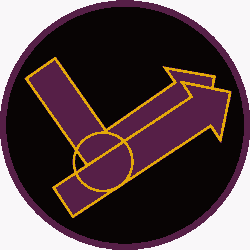The Clash Splash: Building Better Organizations Rapidly

Every day, teams run into walls - and leadership is blissfully unaware:
People waste time navigating conflicting directives. Calendars fill with meetings to work around problems that shouldn’t exist.
They drown in bureaucracy, approvals, delays, and "alignment" exercises that align nothing.
Meanwhile, management is incapacitated by the symptoms: slow execution, incessant firefighting, and their best people quietly burning out.
And when the actual problem finally shows up on the radar, it’s already too political, too expensive, or too late.
The Clash-Splash ends that. This simple, 5-minute daily practice makes misalignment visible, actionable, and accountable.
No slides. No status updates. Just honest tension, the right people, and one fix: Real Progress. Every day.
The Daily Clash Splash
Every day, teams meet for 5 minutes to agree on the following 3 points:
- MIG Check: "What is the Most Important Goal (MIG) we're driving right now?"
- Clash Detection:
"What other goal, rule, practice, or condition clashes with that MIG?"
None? You're set up for succeess - skip, and get stuff done. - Mobilize the Fixers: "Which 3 people do we need to solve this?"
After the Clash Meeting, the identified 3 people meet:
- Splash Session (15 min):
Gather the 3. Share the MIG, name the clash, and decide one action to reduce or eliminate the clash today. - Do:
Just act to resolve the clash. Log details only if there's significant impact. No reporting.
What the Clash-Splash Does
The Clash-Splash makes invisible friction visible, and impossible to ignore.
It shifts leadership energy from firefighing to proactive improvement.
- Surfaces hidden conflict. Teams name the real blockers to progress daily.
- Triggers immediate resolution. The right people fix the right problems today, not someday.
- Creates managerial accountability. The scoreboard shows who addresses the deeper issues—and who avoids them.
- Builds operational trust. Teams see that action is possible. Managers see where to lead.
- Strengthens causal alignment. Every fix moves the system closer to its goals.
Yes, that may feel uncomfortable at first. But it's definitely less uncomfortable than the conversation you need to have regarding all the waste and failure embedded in your current organization.
What Improves?
The purpose of the Splash is to reduce systemic friction. Track leading indicators of performance, such as:
- Blockers overcome
- Meetings eliminated
- Process steps killed
- Approvals removed
- Delays reduced
Do not treat these indicators as vanity metrics: They reflect a system becoming leaner, more aligned, and faster.
Benchmarked how these metrics evolve through Clash-Splashes, and collect hard evidence of impact.
Scoring
Teams keep score of the Clash-Splash with a simple yet powerful scoring system.
- +3 points: Team eliminated their clash autonomously.
- +2 points: Manager resolves a clash.
- -1 point/day: Clash remained unresolved.
- -5 points: Same clash resurfaced after it was considered fixed.
- ×X negative multiplier: Same clash affects multiple teams = deep inspection.
Over time, the Splash Scoreboard becomes a heatmap of where the organization is aligned, and where it is struggling.
Splash scoring must not be tied to personal incentives, lest it loses its purpose.The Splash Podium
The Splash Podium is a public event, chaired by the sponsors of the Clash-Splash, and structured as follows:
- Ownership: Assign owners to the 3 highest-impact unresolved clashes.
- Splash Tally: Reveal the heatmap. Show focus areas for pains and gains.
- Open Round: Teams share wins; managers share their learnings.
- Insights: Top scorers explain how they're making it work.
- Team Vote: "Which of the shared behaviours do we want to proliferate?"
This creates cultural pull instead of compliance pressure.
The Splash Principles
The Clash Splash is a powerhouse for aligning organizations on their goals. It aligns the organization before failure happens and minimizes the need for firefighting or escalation. This power can only manifest when it isn’t subordinated to existing dysfunction.
- Track leading indicators of performance, such as wasted time or effort.
- Resolving cross-cutting clashes is a management priority.
- No bonuses. No gaming.
What Makes or Breaks the Clash-Splash
The Clash-Splash molds an effective organization. These are the conditions that keep it sharp. Ignore them or game them, and lose the benefits.
-
Can’t align on a single MIG in 5 minutes? Congratulations: you’ve surfaced the first real problem.
Now, what will you do about it? -
Can’t get the necessary fixers into the room?
That’s another clash, and maybe the more important one. -
Skip the Clash-Splash? That signals everything’s aligned.
Cancel all alignment meetings that day. And live with the consequences. -
Don’t standardize it. Templates invite gaming.
Keep it alive. Keep it uncomfortable. That’s what makes it work. -
It’s not a process or a method. It’s a reflex.
Once embedded, organizations get faster, leaner, smarter. Inevitably. -
No reporting. Reports are distractions from the MIG.
If your Clash-Splash report becomes the day’s priority, you’ve already failed. -
No follow-up tracking. It doesn’t need to.
Inaction tells you what you need to know. -
Sanity check: Claimed benefits must pass the “laugh test.”
You saved $150M on a $1M budget? Great. Let the CFO know where to find it.
Get Going!
The Clash-Splash does not create tension. It reveals what's already there, then guides you to act.
It shows you where courage lives: those who pick it up say, "I want to improve." If nobody does? Silence speaks louder than words.
You don’t need a rollout, training, kick-off or workshop, to start a Clash-Splash: Just gather your team and do it.
Boardroom, delivery team, senior manager or intern: as soon as you have a goal, it's time to Splash!